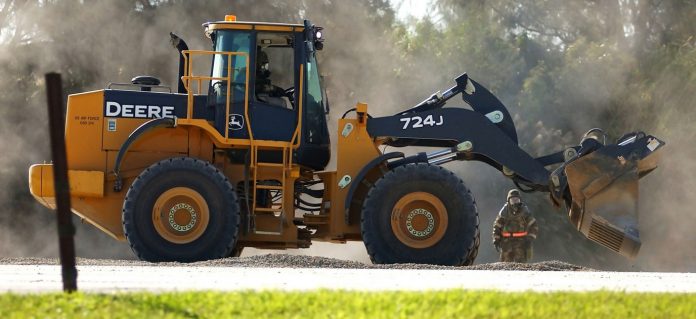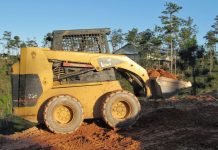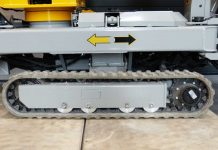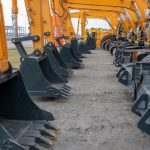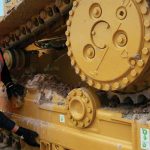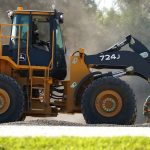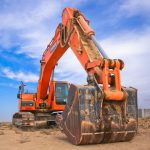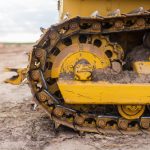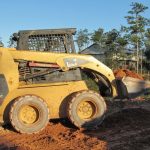Carelessness when operating heavy equipment can be hazardous, not just for you but for people around you. Safety is paramount when handling any form of heavy equipment. Here are some tips to keep you safe whenever you’re in the cab.
Make sure you are properly trained
The first step is education. Everybody who operates heavy equipment should be licensed and trained to use it. This also includes merely driving a piece of equipment to a new area–even if nothing more complicated is needed, you should never allow an unqualified operator to get into the cab of a heavy machine.
Make sure that all of your staff who operate heavy equipment have a thorough knowledge of how the machine operates, what to do in emergency situations, and the correct safety measures they need to take while running the machinery.
It’s also worth reviewing safety procedures. Consider biweekly or monthly safety training for operators to help them top up their knowledge and safety skills.
Conduct a visual inspection
A comprehensive visual inspection before it is used is one of the best ways to avoid accidents on site when working with heavy machinery. Walk around the machine a lap before entering the cab and check for any damage.
Other significant factors such as tire pressure, if appropriate, can also be checked. Once all is in order outside, you should also check inside the cab itself. Performing checks on a daily basis while running heavy equipment will help you prevent disasters caused by defective machinery.
Watch out for overhead or ground hazards
In addition to checking the heavy equipment that you operate on a specified day, it is also essential to observe the conditions of the work site itself. Note any barriers or dangers in the area that may have an effect your work. These may include overhead power lines or underground structures.
Preparations before firing up heavy equipment can also be greatly affected by the weather. Snow and ice, for instance, can render the operation of heavy equipment nigh-on impossible. In such instances, additional measures will probably be required.
In some circumstances, work might need to be delayed until conditions improve. Even the most skilled operators postpone job sometimes, because nothing is more crucial than the safety of your workplace and others.
Be extra careful when mounting the vehicle
Falling is the most prevalent cause of death at work in America. In 2018, most of the OSHA violations on constructions sites were from not following OSHA’s fall protection standards. In this respect, it is important to be careful when getting in and out of heavy equipment.
You should always maintain three contact points with the machine. Regularly check the condition of the steps and handholds. If needed, repair or replace them. These measures could be the difference in preventing potentially fatal falls and accidents.
Protect yourself
Correctly wearing the right protective gear when operating heavy equipment helps protect your body when you are on the job. These devices include hard hats, eyewear, gloves and steel toed job shoes. Some kind of ear coverage is also necessary to safeguard against hearing loss induced by extended exposure to loud machine noise.
Wearing a seat belt could save the life of the operator. In the case of a rollover (in which the building machine falls onto its side because of uneven ground), wearing a seat belt could be the difference between life and death.
Clear the area
Workers in areas where heavy equipment is operating should be clear of the area wherever possible. In order to prevent hitting other workers, bystanders or other vehicles or machinery in the area, operators should also be conscious of their swing radius, particularly when they are operating in tight spaces.
Observe the load limits of your machine
Be conscious of the load limits of each machine when operating different heavy equipment throughout the day. Depending on the machinery set-up and size, load boundaries may differ dramatically. When lifting objects with a machine, guarantee that loads are secured with appropriate rigging attachments, and always check to guarantee that they are in excellent working condition.
Watch out when backing up
Moving heavy equipment forward may present some hazards, but going in reverse only raises the risk. The operator must make sure that there are no obstructions or people behind them. To do this, they might need to leave the car and physically check that the perimeter is secure. In addition, monitoring the mirrors while moving backwards is also crucial.
The most important thing is to communicate
Probably the best safety for construction-related accidents is a well designed communication system. Whether it is through two-way radios, walkie-talkies or some other system, efficient communication is essential to preventing accidents at work. Letting others know about the current status of the construction site enables all operators to remain informed and ensure nobody is hurt.
Tracks and Teeth
If you’re a heavy equipment operator, you know that maintenance is key to making sure it’s in safe working condition at all times. This means replacing any parts which are way past their prime. If you’re looking for great aftermarket parts, check out our online marketplace store.


